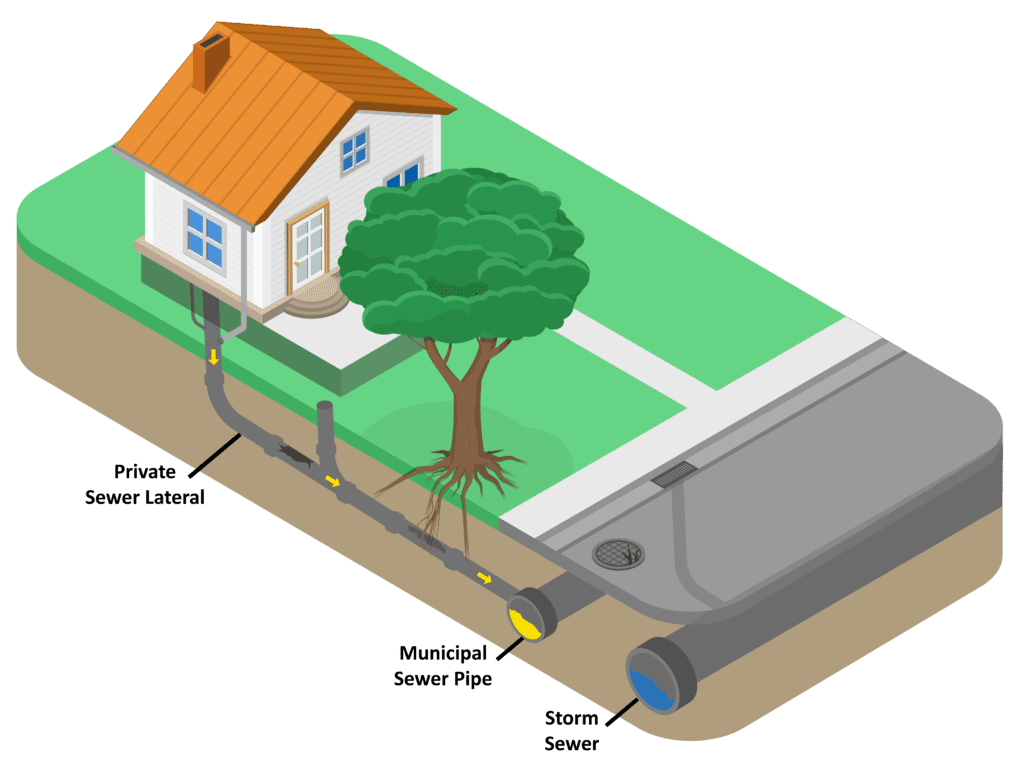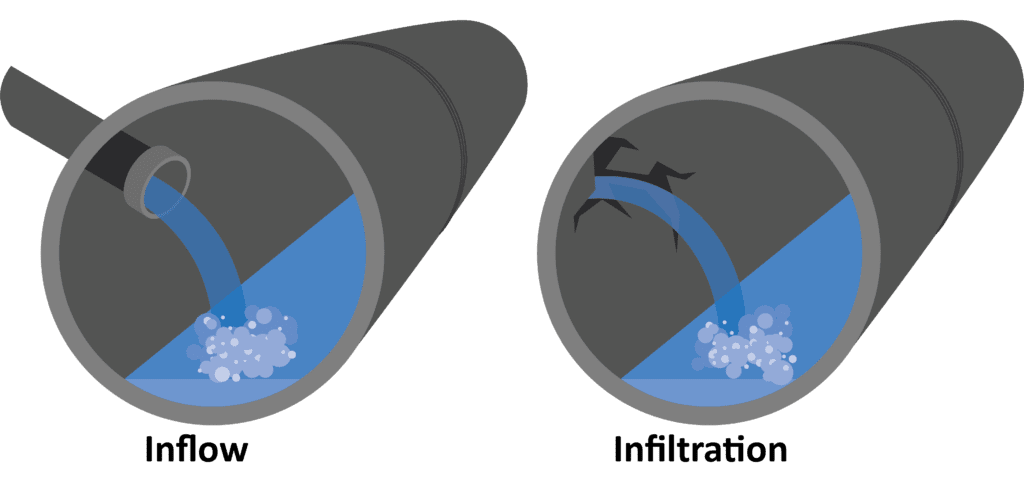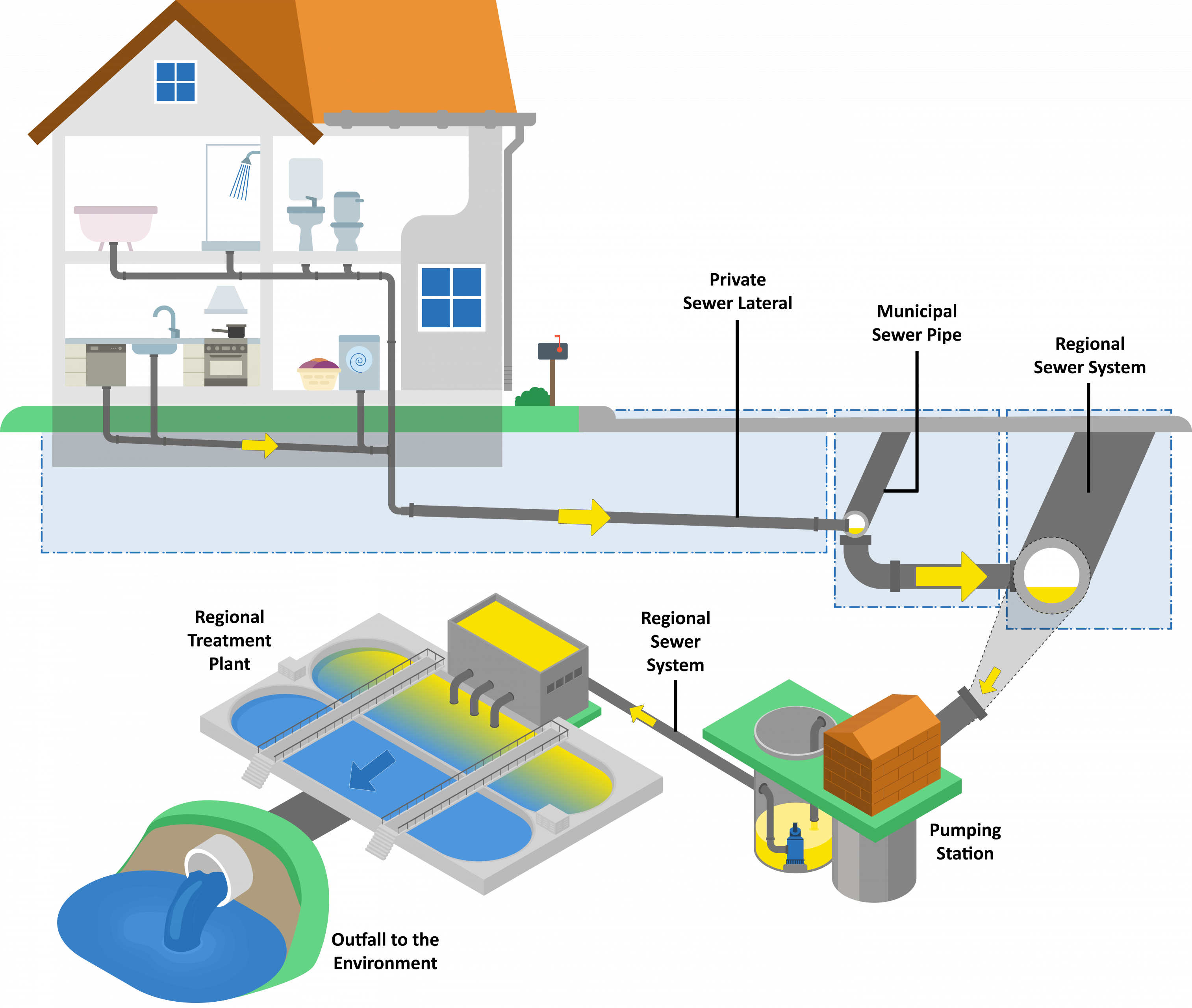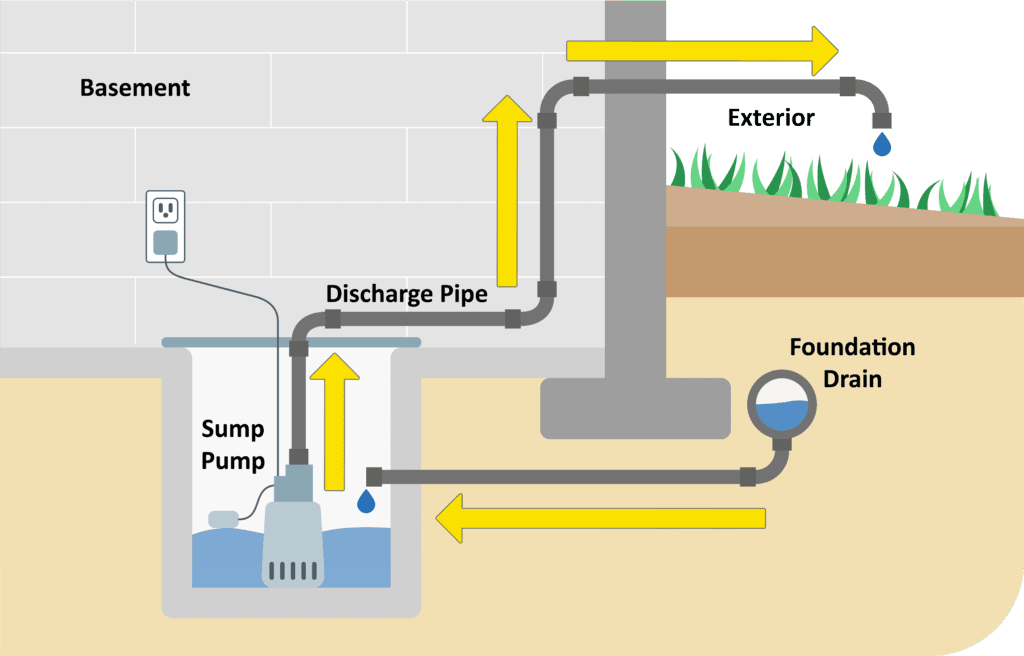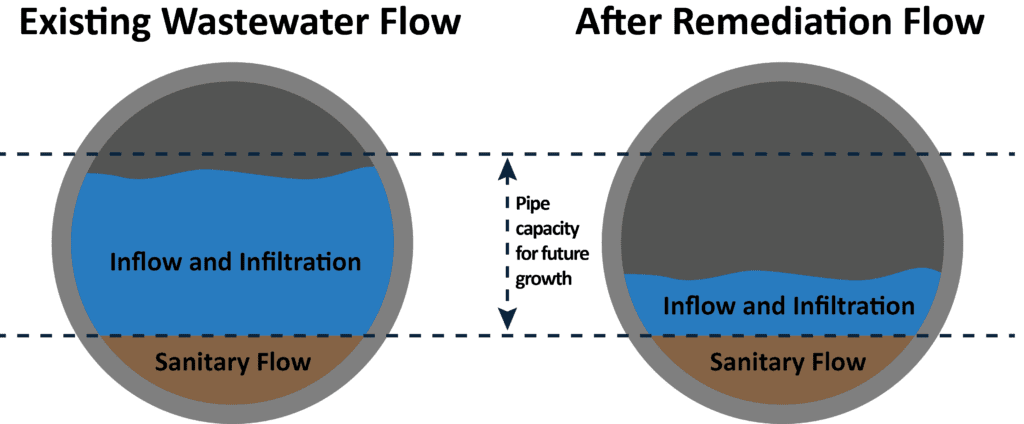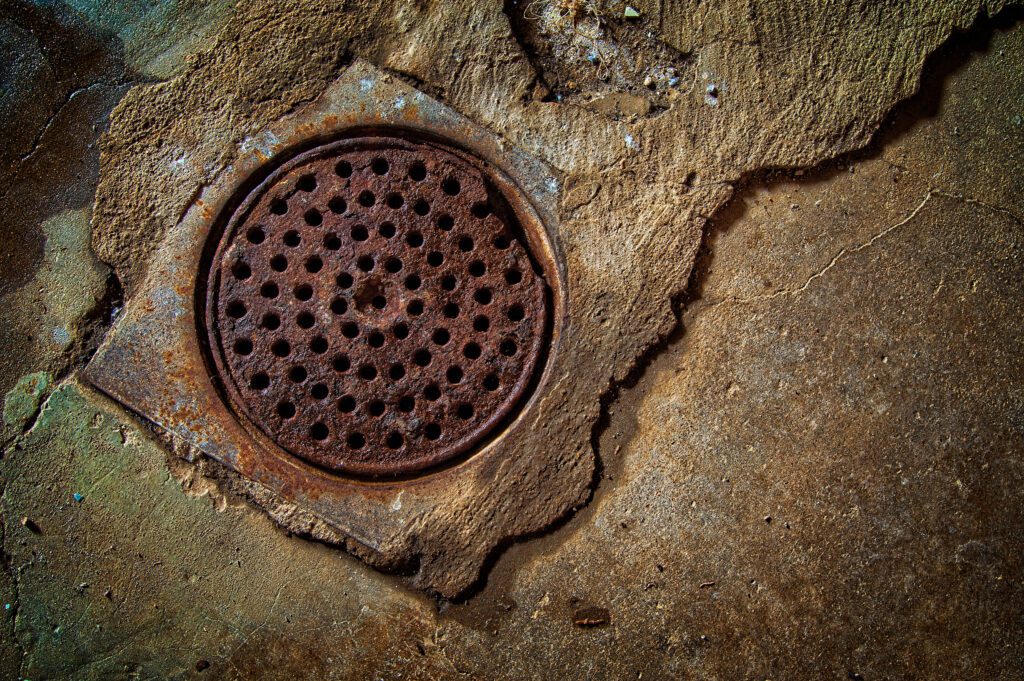Disconnect and Reduce Inflow and Infiltration to Private Sewers

Keep clear water out of wastewater systems
DRIIPS, short for Disconnect and Reduce Inflow and Infiltration to Private Sewers, is a regional program to reduce the volume of clear water in sanitary sewers and the wastewater treatment system. Clear water from inflow and infiltration puts unnecessary stress and costs on local and regional systems while decreasing the available capacity for wastewater in pipes.
As part of the DRIIPS program, communities from across the District’s service area came together to build a unique educational program. DRIIPS program materials share helpful information with local residents and business owners about inflow and infiltration, wastewater treatment, private sewer lateral ownership, connections to sump pumps and responsibility for wastewater compliance.
DRIIPS Program Materials
Inflow & Infiltration
Inflow and infiltration (I&I) is clear water – such as groundwater and storm water – that enters the sanitary sewer system from unwanted sources.
Collection & Treatment
The sanitary sewer system takes wastewater from the service area to the treatment plant for cleaning before it returns to the environment.
I&I Compliance
Sewer Use Ordinance 4.7.5 says communities are responsible for preventing clear water from entering the regional sewer system through I&I.
Sewer Backups: What to Do
It can be stressful and scary to experience water in your basement. We’ve created a helpful flyer as part of the DRIIPS program with tips on what to do in the event of a sewer backup and how to clean up any water.







